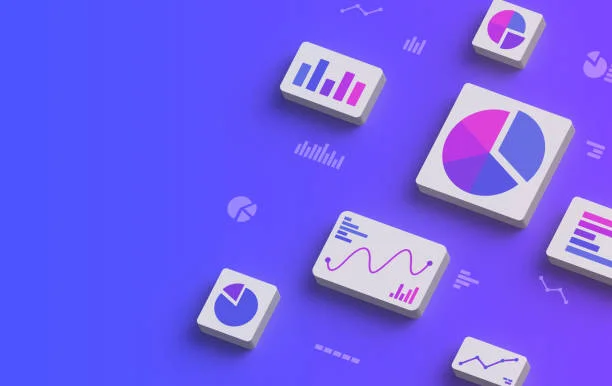Your business is growing, right? That’s great!
Over time, you’ve clearly understood your business’s needs. You might also be known for or already utilize specific tools to drive critical insights for further decision-making. Most have heard of data visualization.
For those unaware, data visualization is a tool that analyzes your organization’s data carefully and converts it into fun, in short, different visual formats such as graphs, pie charts, heat maps, scatter plots, and other interactive elements. But with so many options available, how do you choose the best one for your needs?
This article is curated to clear up your doubts regarding the same. Ready to dive in?
More About Data Visualization Tools
A data visualization tool is software used to visualize data. Every tool differs in terms of its features, but one common feature is that it allows you to input a data set and present it graphically. You know how important data is for making critical business decisions for any organization. These tools support a range of visual styles, are easy to use, and can handle small to vast amounts of data.
Some of the top-notch data visualization tools are as follows:
- Tableau
- Datawrapper
- Dundas BI
- Google Charts
Tableau
Tableau is a popular data visualization tool that lets you analyze data from multiple sources and create dashboards. The sources include databases, spreadsheets, cloud services, and more. This helps you import and transform data for analysis.
Features: –
- Can handle large volumes of data
- Includes chart templates
- Free availability of public version
Datawrapper
Datawrapper is a user-friendly tool for creating tables, charts, maps, and websites. The best part is That it has all the features required to create visualizations for your reports, publications, and articles.
Features: –
- Visualizations work well in light and dark mode
- Custom design theme
- Mobile friendly
Dundas BI
The next on the list of best visualization tools is Dundas BI. This tool allows you to create customizable data visualizations with highly interactive maps and charts by optimizing the creation of multi-page reports. Dundas BI’s BI aims to discover more insights, make better decisions, and achieve success.
Features: –
- Smooth user experience
- Flexible platform
Google Charts
Google Charts is a free data visualization tool for curating interactive charts and integrating them online. The noteworthy point is that Google Charts works directly with dynamic charts. Thus, the outputs are entirely based on SVG and HTML 5, so they work well in browsers without needing extra plugins. Different types of charts include scatter charts, maps, histograms, bar charts, pie charts, and more.
Features: –
- Range of chart formats available
- The data visualization tool is free
- Cross-browser compatibility
Here’s more of them: Exploring the Different Types of Data Visualization Tools
Key Considerations While Choosing Data Visualization Tools
Cost
Everything comes down when it comes to the cost. Choosing the data visualization tool that best fits your budget and needs is essential. Many expensive options are available with enhanced features at a price. Moreover, consider your business size and see if the features are necessary. Small-scale companies can always use a budget-friendly tool. Mid-size to large-scale companies can use tools like Tableau and Microsoft Power BI, which offer scalability for growing businesses
User-Friendly
When doing business, you’ll want to save time. Thus, go with an easy-to-use data visualization tool. These tools range from complex to easy, and the easier ones are always popular. This way, you can spend little time learning while allowing you to focus on the core operations.
Data Type and Source
The first and foremost factor to consider is the type of data your visualization uses and where it comes from. It is important to note that some tools are apt for structured data, while others are for unstructured data. For example, Tableau is a tool used for visualizing structured data, and D3.js is better suited for unstructured data.
Amidst all, your data can come from multiple sources, and that’s obvious, say, social media, websites, and more. In this scenario, you need a data visualization tool that can handle data from different data sources and handle data integration.
Flexibility and Customization
Sometimes, you will want to customize your data visualization for better insights. Fortunately, some data visualization tools offer the required flexibility. Look for tools with various layout options, color schemes, pre-built templates, and more. By customizing visualizations, you can outshine the competition and take your business further.
Know Your Business Goals
Before you start analyzing the data visualization tools, clarify your prime goals. This includes what you want to achieve with your data, who you are presenting the data to, and how your audience will interact with your data. By asking yourself these questions, you will get a clear idea of the purpose, scope, and format of your data visualization projects.
Wrapping it Up
As discussed above, there are a variety of data visualization tools available, and it can be tough to decide which one to use. However, the factors mentioned above can help make your job easy. Data visualization has become an indispensable tool that businesses need to keep up with graphical insights that grab attention quickly and simplify things. After all, in the end, which one to go with depends on your business needs!
Also Read:
Visualizing Choices: Data Visualization Tools Comparison Chart
Features and Functionality: What to Look for in Data Visualization Tools


